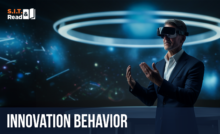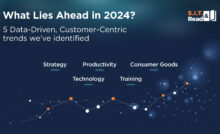Four Steps for an Impactful Session


I am definitely not a charismatic speaker. My voice doesn’t project much, my physical presence is underwhelming and the energy that emanates from me is more soothing than exciting, as I’ve been told (they meant it in a nice way😊). Despite all the above-mentioned handicaps, I very often deliver what are considered very effective talks, courses or workshops. When I teach in universities, I am consistently rated very high in terms of student satisfaction (which doesn’t mean much, but helps me set up the argument for this post) and in the good old days I presented in conferences appearing to impact audiences. How is this possible?
Part of the explanation is the content, obviously. Easier to engage your audience when your topic is innovation. Yet, I believe that at least part of the explanation lies with the model I use, which is in no way rocket science-ish, but is based on common sense and plenty of experience. According to the model, in order to create a tangible impact on participants in a session, a speaker should take them through 4 STAGES. Note, by the way, that I refer to “participants”, rather than “listeners”. To achieve meaningful learning, participants should actively move between the following 4 stages, not just by listening.
Stage 1: Rock the Boat, Unsettle
The first station in the journey is often missing in talks or workshops, mainly because it can be a somewhat unpleasant experience for the audience. In this stage, you must create among your listeners a sense of dissatisfaction, or at least unease with their current status. For example, if your topic is innovation, and you believe, as we (in SIT) do, that a key message in this context is the importance of cognitive fixedness as a barrier to innovation, you will want to start by demonstrating to each and every person in the audience that he or she themselves suffer from some kind of fixedness. Just hitting them with, say, a mathematical puzzle won’t do the job, since most of the audience will just shrug it off as irrelevant (and rightly so). In a similar vein, jointly making fun of the mythological Patent Office director who is supposed to have claimed in the end of the 19th century that no more inventions were needed is merely a cheap way of pleasing your audience with the false feeling that some stupid bureaucrat in the 19th century had fixedness, and we can mock him from our superior vantage point. Instead, challenge them with something that will readily demonstrate: a) that each and every one of them suffers from fixedness, and b) that you are exactly in the same boat with them (admit it, your only advantage over them is that you came to the session prepared).
In this stage you are creating the cracks through which new information and – more important – novel beliefs and sensations will start penetrating the minds of your audience. Without it, the chances that they will open themselves to a real change are slim. With it, there is some possibility that this will happen, provided you can pull off the other three stages as well. But a caveat is in place. Making the audience uneasy is a risky move: some people can actually get up and leave (happened to me in a corporation in the US when I declared that I will not be using a PPT presentation in my session), others can mentally switch off or decide that they hate your guts. The goal, then, is that they feel disturbed by the content but not so perturbed that they disconnect or lose their trust in you.
Stage 2: True, it’s tough, but there is a horizon
After feeling a bit down in the first stage, your audience needs a boost. They need to feel hope. This is, therefore, the time to share positive and even uplifting examples. Whereby in the first stage you focused on a problem, now is the time to demonstrate solutions. In the example I used for Stage 1, you will move from demonstrating that you, me, everyone has fixedness (scary!) to exemplifying that fixedness can be overcome (phew!), for example by showing an elegant solution to an interesting puzzle you shared in the first stage. This needs to be handled with care as well, because you are showing that a solution can be found, but still haven’t described HOW.
Stage 3: Not only are there solutions, but there are tools to reach them
This is where the real work happens, and the official takeaway is supplied – you present the tools, which are often the reason why participants attended your session in the first place. This is considered, as if by definition, the most practical part of your session. In reality, though, the shock you delivered in Stage 1 is probably the biggest gift that a participant can receive. A tool without mindset change is often useless, while a realization of the limits of your current thinking can many times be an important first step for habit-changing. Still, it is better to bow to popular demand and supply tools, and indeed, if you do a good job, participants will then be able to apply them post-session. In our example from Stages 1 and 2, I would at this point demonstrate one of what we call our “Thinking Tools”, designed to break the fixedness to which we called attention at the outset. BUT, this post-session implementation will typically happen only provided that you deliver a proper Stage 4.
Stage 4: Not only are there techniques and tools, but YOU yourself can leave here and use them
This stage is also often overlooked, or its importance underestimated. Paradoxically, the more charismatic the speaker and impressive the show, the lower the probability of implementation by the audience (yes, you say to yourself, here is the uncharismatic author of the article rationalizing his situation😊). “Yes, sure,” our participant says to herself or him, “All this is well and good for you, rock star, but what has it got to do with poor old un-innovative me?” This is the part in which the participant needs to be convinced that all this good stuff s/he has been hearing about can actually be useful in their reality with their abilities. The most effective way of achieving this objective is allowing the participants to experience your tools or technique there and then, allowing them to feel at least some measure of success. You can also tell them of others, similar in as many respects as you can to them, who have crossed the bridge. This is also often not sufficient, so the last part of Stage 4 is where you lead each of your participants to commit to a specific action that will allow them to bring to bear their learning in the near future on a real-life issue. In our fixedness example we would ask them to think of a specific topic or issue that they would approach using this tool, imagine a partner or partners with whom they would like to try this out, and – if possible – even send them a message right there, during the session, and set a time to talk.
These are the 4 Stages – they are not very easy to follow, but also not beyond the reach of any of our readers here. The catch is that if your main goal is to get a standing ovation (TED-style) or high grades on a feedback form, or just enjoy smiles all around, then the recipe presented here is probably not your best choice. But, if you wish your session to lead to a concrete impact on a large percentage of your audience, following these four stages greatly increases your probability to succeed.
There is also a bonus to adopting the 4 Stage model: with some adaptations, this model can also serve as a general blueprint for driving organizational change. You can find some hints in our articles on Errors of Exclusion: Two Blind Spots when Planning your Innovation Initiative; On Indicators and Measuring Innovation – Part 1; On Indicators and Measuring Innovation – Part 2 More on this topic in a future article.
Recent Posts
Innovation Behavior
Innovation is a skill, not a gift. Top organizations drive growth by nurturing and investing…
Should you learn TRIZ? – Yes. ….and No.
Are you in the world of problem solving? Is problem solving a skillset you have…
What Lies Ahead in 2024?
5 Data-Driven, Customer-Centric trends we’ve identified This is not just another conventional forecast. Over nearly…
Fork or Chopsticks – Which Innovation Tools Do You Use?
Imagine a chef, who only uses a spoon. Imagine a dentist, who only uses a…
The Moat Mentality: Exploring New Frontiers in Innovation Methodologies
In investing and business strategy, we often speak in terms of moats. Warren Edward Buffett…
Was it a Breakthrough or an Adjacency?
This year, P&G’s Febreze celebrates its silver anniversary as a brand. But not all 25…


